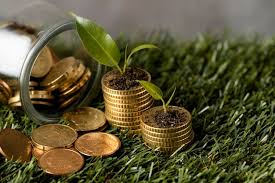India has secured $1.5 billion from the World Bank to accelerate its low carbon energy transition.
The operation is funded by a $1.46 billion loan from the International Bank for Reconstruction and Development and a $31.5 million credit from the International Development Association. It is in line with India’s energy security and the Bank’s Hydrogen for Development (H4D) Partnership.
Reforms:
The operation’s reforms are projected to generate at least 450,000 metric tons of green hydrogen and 1,500 MW of electrolyzers annually from FY25/26 onwards. The operation will boost renewable energy capacity, reduce emissions by 50 million tons annually, and develop a national carbon credit market.
They support reforms to increase renewable energy penetration in India, including incentivizing battery energy storage solutions and amending the Indian Electricity Grid Code.
Low-Carbon Energy Programmatic Development Policy Operation 1:
It must be noted that the First $6 billion in sovereign green bonds Low-Carbon Energy Programmatic Development Policy Operation initiated in June 2023, to advance support for policy action to:
• scale up renewable energy supply
• reducing costs
• improve grid integration
• stimulate private financing
• address viability funding gaps
• reduce off-taker risks
• stimulate demand for renewable energy.
This will help India reach its committed 500 GW of renewable energy capacity by 2030. The government plans to issue bids for 50 GW of renewable energy each year from FY23-24 to FY27-28, which will avoid carbon emissions of 40 million tons per annum by 2026, WB had said in a prior statement.
WB notes:
“The World Bank is pleased to continue supporting India’s low-carbon development strategy which will help achieve the country’s net-zero target while creating clean energy jobs in the private sector,” said Auguste Tano Kouame, Country Director, India, World Bank.
“India has taken bold action to develop a domestic market for green hydrogen, underpinned by rapidly expanding renewable energy capacity. The first tenders under the National Green Hydrogen Mission’s incentive scheme have demonstrated significant private sector interest,” said Aurélien Kruse, Xiaodong Wang, and Surbhi Goyal, Team Leaders for the operation. “The operation is helping in scaling up investments in green hydrogen and in renewable energy infrastructure. This will contribute towards India’s journey for achieving its Nationally Determined Contributions targets.”

